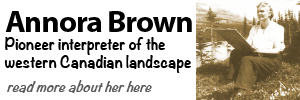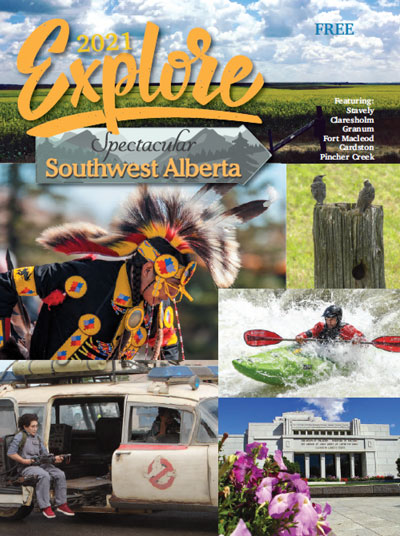
Back row, from left: Angeline Webb of the Canadian Cancer Society; Les Hagen of Action on Smoking and Health; Tobacco Warriors Dillon Campiou, Treffrey Deerfoot, and Ethan Yellow Old Woman. Front row, from left: Andrew Boitchenko, parliamentary secretary for Indigenous relations, Charlene Bruno, community engagement specialist for the collaboration, Tobacco Warriors Vanessa Kyme-Gilbert and Raquel Healy; Speaker Nathan Cooper, Minister of Indigenous Relations Rick Wilson, and Scott Sinclair, parliamentary secretary for Indigenous policing. Photo courtesy Alberta Indigenous Relations
The significance of a late-winter’s visit to the legislature lives on for its Indigenous participants, officially honoured for spreading their message about using tobacco in a good way.
Tears welled up for a Tobacco Warrior from Alexis Nakota Sioux Nation. And she wasn’t the only one.
“I’ve never experienced anything like that before,” says Vanessa Kyme-Gilbert of the Keep Tobacco Sacred Collaboration.
“Being there made me realize how important the work we are doing is. I just really appreciated that and to have the opportunity was very humbling,” continues the University of Alberta student and employee of the Yellowhead Tribal Council.
“It felt good to see so many Indigenous people inside the legislature. You look around and we’re crying. It was great.”
Adds fellow Tobacco Warrior Dylan Campiou: “Now we feel the need to double down, to know the path we’re on is a good path, and to play full out, not be afraid, not hold back. We know that the work we do can really benefit other people.”
The warriors were among a group who met Speaker Nathan Cooper and rose for an official welcome in the legislative assembly.
Cooper also introduced two southern Alberta Tobacco Warriors from Treaty 7 territory — Raquel Healy of Kainai Nation and Ethan Yellow Old Woman of Siksika Nation — along with Siksika Nation bundle holder Treffrey Deerfoot and the collaboration’s community engagement specialist Charlene Bruno from Samson Cree Nation.
Bruno called the visit important validation, especially while the group looks to replace federal funding that’s just ended.
The unexpected invitation “really showed that people are noticing the work that’s being done on this initiative, because everything’s being done in a good way, in the right way, in the way it should be done,” says Bruno.
“It’s just been such a great experience, I think, for all of us,” says the consultant from the Treaty 6 area south of Edmonton.
Projects include growing and harvesting tobacco; sharing knowledge, messages and tools on social media and the collaboration’s Web site; crewing booths at conventions; and strengthening the connection of elders and knowledge keepers to Indigenous communities.
One collaboration goal is to improve the health of its peoples by reducing the use of commercially produced tobacco and fighting addictions to smoking, chewing and vaping.
The health message is important, Bruno says, when you consider the death and sickness smoking continues to cause in Indigenous communities.
Commercial cigarettes are manufactured from about 600 ingredients, creating more than 7,000 chemicals when they burn. “Imagine what that’s doing when you inhale that into your body,” Bruno said.
Although Statistics Canada data on Indigenous smoking in Alberta is inconclusive, data from other jurisdictions suggests that the smoking rate for First Nations individuals is about 50 per cent on-reserve and more than 40 per cent off-reserve. Just 12 per cent of Canada’s general population aged 15 or older smoke cigarettes, says Statistics Canada data from 2022.
The leading cause of cancer death among all people in Canada is lung cancer, says the Canadian Partnership Against Cancer. But First Nations individuals are 35 per cent less likely than others to survive five years after diagnosis, the Web site for the federally mandated organization says.
MyHealth Alberta, an information portal of Alberta Health Services, points to the prevalence of chronic obstructive pulmonary disease. Commonly linked to smoking, COPD is twice as common among Indigenous individuals as it is the general population.
Trends suggest that more than one in four First Nations people could die early because of smoking.
But community health has further dimensions. The collaboration is also about re-entrenching cultural practices by passing them to younger generations. “The translation piece is very important to us. Unfortunately, a lot of our elders are leaving us, and they’re taking a lot of that knowledge with them,” Bruno says.
“So it’s always been of utmost importance that we have young people to work with.”
Enter the warriors.
The young adult ambassadors joined the collaboration last fall, and an early order of business was coming up with the title Tobacco Warriors.
Alberta’s three treaty areas are represented by Tobacco Warriors. Campiou is from Sucker Creek Nation in northern Alberta’s Treaty 8 territory. Kyme-Gilbert’s home nation is made up of reserves north and west of Edmonton in Treaty 6. Another warrior is from Treaty 6 and two are from Treaty 7 in southern Alberta.
The warriors encourage the use of non-commercial tobacco for prayer, smudging, gift protocol, connecting with elders, pipe ceremonies, sundances and more.
“It’s very versatile. We use it in many different ways,” said Campiou, a certified life coach. “And it always has a spiritual connection, like when we use it in our prayers.”
Campiou looks at the Keep Tobacco Sacred Collaboration as an important chapter in his story.
“My journey has been a lot about self discovery, growing and learning so that I can help other people,” Campiou said.
The invitation from Keep Tobacco Sacred Collaboration “aligned perfectly to where I was headed, so I’m really happy to be a part of it.”
Says Kyme-Gilbert: “I’m just going where I feel like Creator is leading me. And I believe that the Keep Tobacco Sacred Collaboration is somewhere he brought me.
“I want to do good work and help people.”




